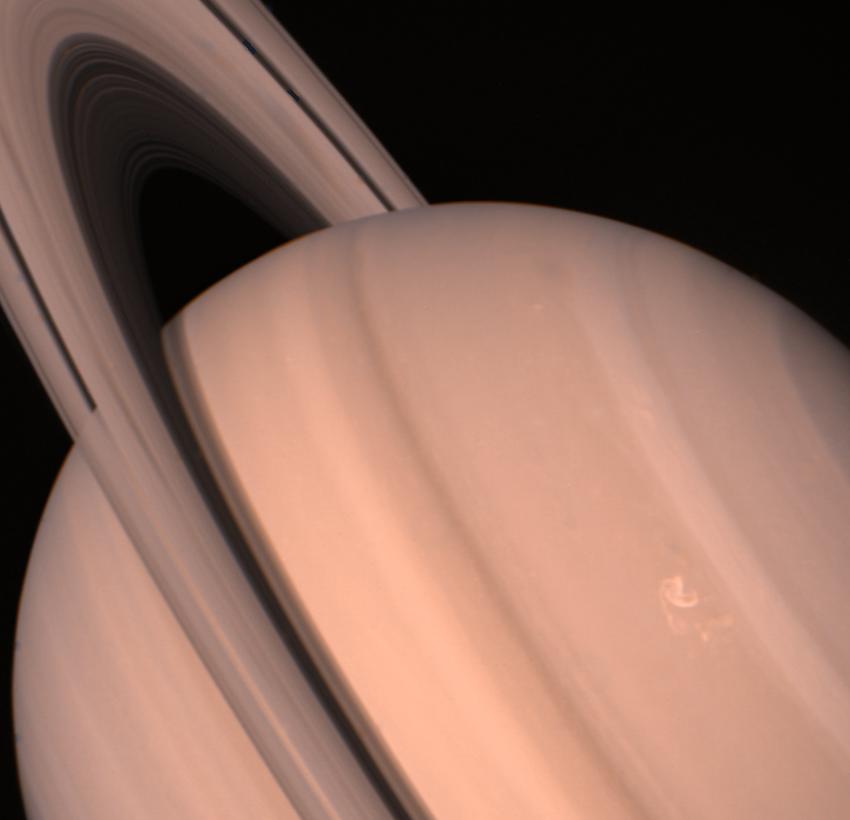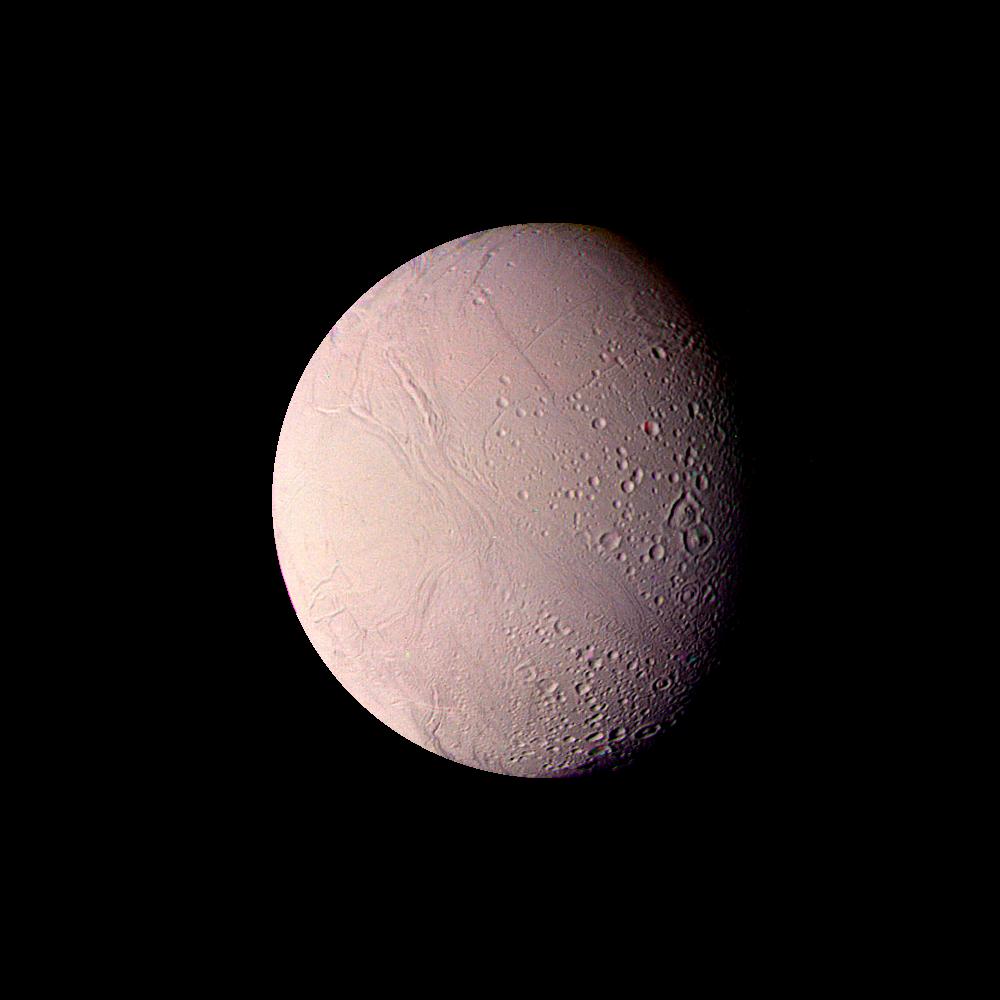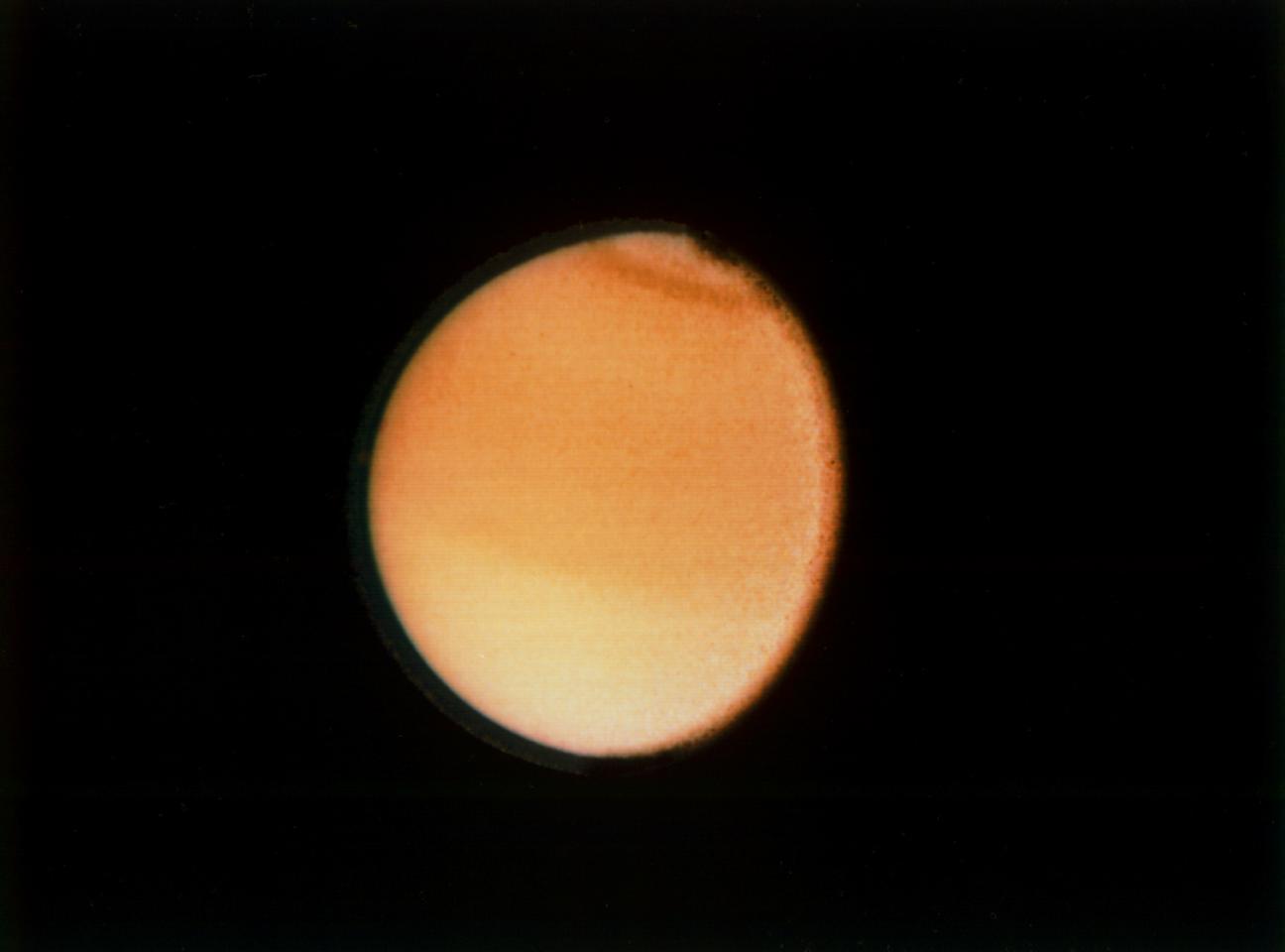Happy Anniversary, Voyager 2! NASA Probe Flew by Saturn 35 Years Ago

Thirty-five years ago today, a NASA spacecraft got an up-close look at beautiful, enigmatic Saturn.
On Aug. 25, 1981, the Voyager 2 probe zoomed within 26,000 miles (41,000 kilometers) of the ringed planet's cloud tops. The discoveries made by Voyager 2 — and by its twin, Voyager 1, which had flown past Saturn nine months earlier — reshaped scientists' understanding of the Saturn system and planted the seed for NASA's Cassini mission, which began orbiting the ringed planet in 2004, NASA officials said.
"Saturn, like all of the planets the Voyagers visited, was full of exciting discoveries and surprises," Ed Stone, Voyager project scientist at the California Institute of Technology in Pasadena, said in a statement. "By giving us unprecedented views of the Saturn system, Voyager gave us plenty of reasons to go back for a closer look." [Photos from NASA's Voyager 1 and 2 Probes]
Voyager 1 and Voyager 2 launched a few weeks apart in 1977, tasked with performing a "grand tour" of the solar system's big planets — Jupiter, Saturn, Uranus and Neptune. The two spacecraft accomplished that goal, eyeing all four gaseous worlds up close, and also studying 48 of their moons. (Voyager 1 flew past Jupiter and Saturn, while Voyager 2 had close encounters with all four planets.)
The Voyagers weren't the first spacecraft to fly by Saturn; that distinction belongs to NASA's Pioneer 11 probe, which did so in 1979. But the Voyagers broke a lot of new ground; they discovered four new Saturn moons, for example, and revealed an incredible diversity of landscapes on satellites such as Dione, Tethys and Iapetus, NASA officials said.
"The stars of the Saturn system are the moons, which surprised all of us on both the Voyager and Cassini missions," Cassini project scientist Linda Spilker, of NASA's Jet Propulsion Laboratory in Pasadena, said in the same statement. (Spilker was also a member of the Voyager science team.)
The Voyagers also gathered evidence suggesting that the icy, 313-mile-wide (504 km) Saturn moon Enceladus is geologically active — a hypothesis that Cassini spectacularly confirmed in 2005 with photos of water-ice geysers blasting from Enceladus' south polar region.
Breaking space news, the latest updates on rocket launches, skywatching events and more!
Further Cassini observations have revealed that Enceladus likely harbors an ocean of liquid water beneath its icy shell; astrobiologists regard the moon as one of the solar system's best bets to host alien life.
The Voyagers also discovered a huge and bizarre hexagonal vortex at Saturn's north pole, and the twin craft made the first up-close observations of the planet's famous rings. Furthermore, the Voyager mission determined that the atmosphere of Saturn's biggest moon, Titan, is composed mainly of nitrogen, but the spacecraft weren't able to peer through this thick haze.
Cassini, however, has been able to map Titan using radar, revealing vast seas of liquid hydrocarbons on the moon's surface. Cassini also carried a piggyback probe called Huygens, which landed and operated on the moon briefly in January 2005.
"The twin Voyagers rewrote the textbooks on Saturn, its rings and moons, and we couldn't wait to go back with Cassini," Spilker said. "New mysteries uncovered by Cassini will await the next missions to follow in the footsteps of Voyager."
Cassini is scheduled to end its life with an intentional death dive into Saturn's atmosphere in September 2017 — a move designed to ensure that the spacecraft doesn’t contaminate Enceladus or Titan with microbes from Earth.
The Voyagers, meanwhile, continue to explore the dark depths of space, far from the sun. Voyager 1 entered interstellar space in August 2012 and is currently about 12.6 billion miles (20.3 billion km) from Earth. (No other human-made object is farther from home.)
Voyager 2, which took a different route through space, is about 10.4 billion miles (16.7 billion km) from Earth. The probe should join Voyager 1 in interstellar space relatively soon, NASA officials have said.
Follow Mike Wall on Twitter @michaeldwall and Google+. Follow us @Spacedotcom, Facebook or Google+. Originally published on Space.com.

Michael Wall is a Senior Space Writer with Space.com and joined the team in 2010. He primarily covers exoplanets, spaceflight and military space, but has been known to dabble in the space art beat. His book about the search for alien life, "Out There," was published on Nov. 13, 2018. Before becoming a science writer, Michael worked as a herpetologist and wildlife biologist. He has a Ph.D. in evolutionary biology from the University of Sydney, Australia, a bachelor's degree from the University of Arizona, and a graduate certificate in science writing from the University of California, Santa Cruz. To find out what his latest project is, you can follow Michael on Twitter.




